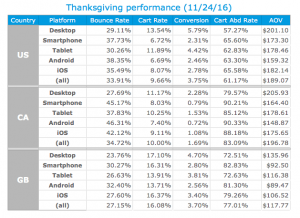Google’s Weather Ad-Choice Simulator

A weather simulator enhanced with machine-learning technology has been found to match the accuracy of conventional forecasts and can also estimate how much the atmosphere has warmed with climate change.
Data from the simulator, in my opinion, has the potential to improve ad targeting based on weather predictions in specific geographic areas around the world, perhaps with higher accuracy rates and less energy.
Weather-based data ad targeting has been around for years from companies such as The Weather Company.
The data can help advertisers understand how weather influences buyer behavior and shopping habits.
During Tuesday’s earnings call with analysts and investors, Alphabet and Google CEO Sundar Pichai talked about why the company chose not to continue on the same track to deprecate third-party cookies in Chrome.
“We are committed to improving privacy for users in Chrome, and that was the whole focus of Privacy Sandbox,” Pichai said. “On third-party cookies, given the implications across the industry and feedback from so many stakeholders, we now believe user choice is the best option.”
The Google research team behind the project did not appear to have ad targeting in mind. Instead, they were focused on climate change.
But climate models are workhorses for advertisers and local TV meteorologists, as well as what Bloomberg called in its piece “climate scientists investigating how much people may heat up the world. Today’s climate models are physics rendered as software, with the major parts of the Earth system set in action together: atmosphere, ocean, land and ice.”
Google’s research paper describes the how the simulator could lead to the development of weather and climate modeling tools that require a small fraction of the computing power needed today.
The research, initially published in Nature and Bloomberg, outlines models built on machine-learning techniques using about 40?years of historical data from the European Center for Medium-Range Weather Forecasts (ECMWF), among others.
“General circulation models (GCMs) are the foundation of weather and climate prediction,” the research paper says.
But in the paper, the researchers present GCM in a way that combines different technology that allows it to analyze the dynamics of atmospheric weather using ML to show that it can generate “forecasts of deterministic weather, ensemble weather and climate on par with the best machine-learning and physics-based methods.”
(11)
Report Post







